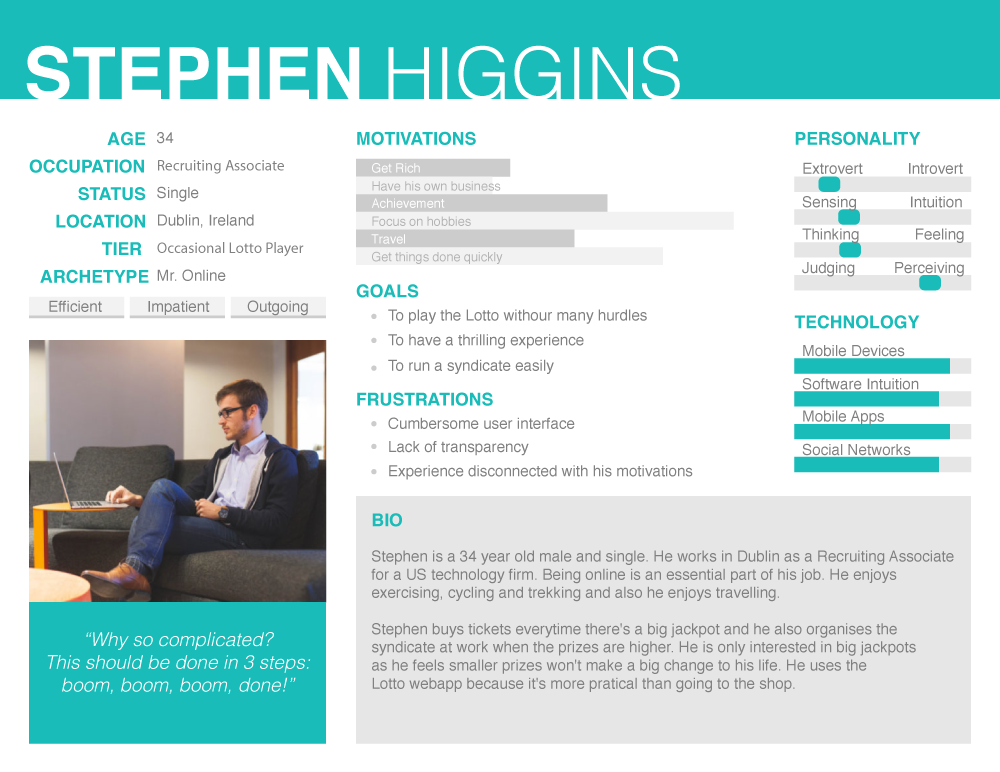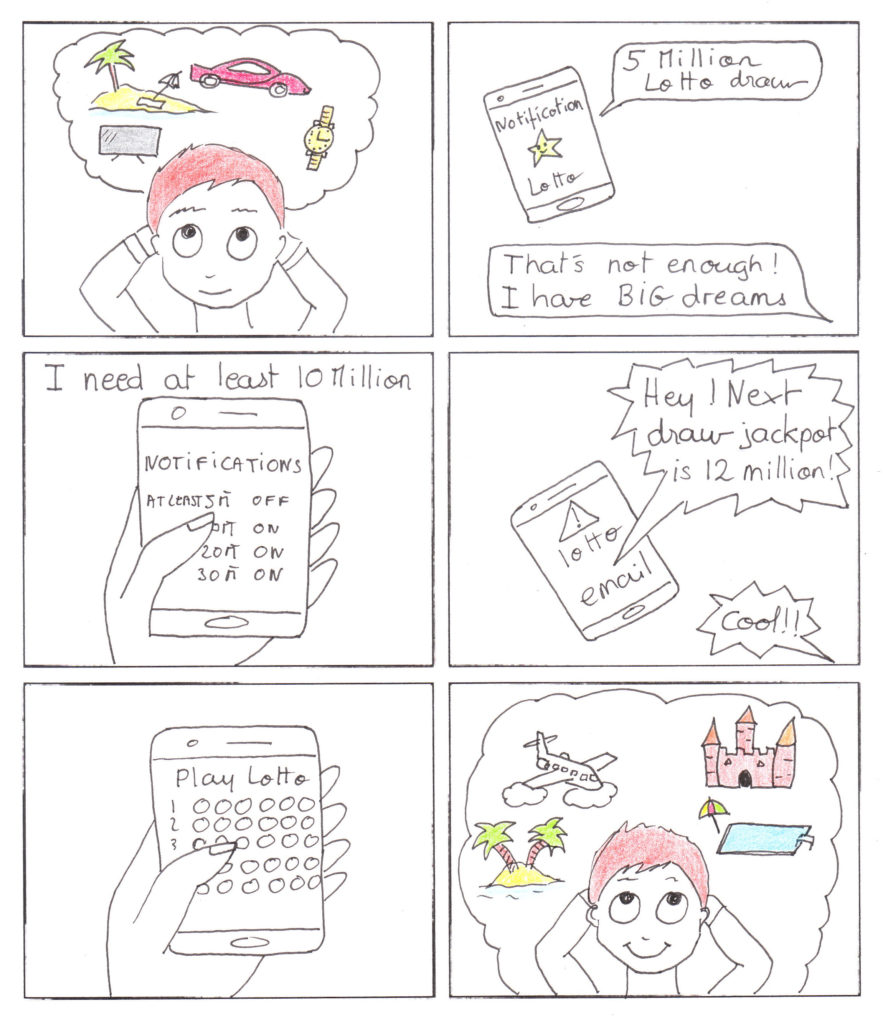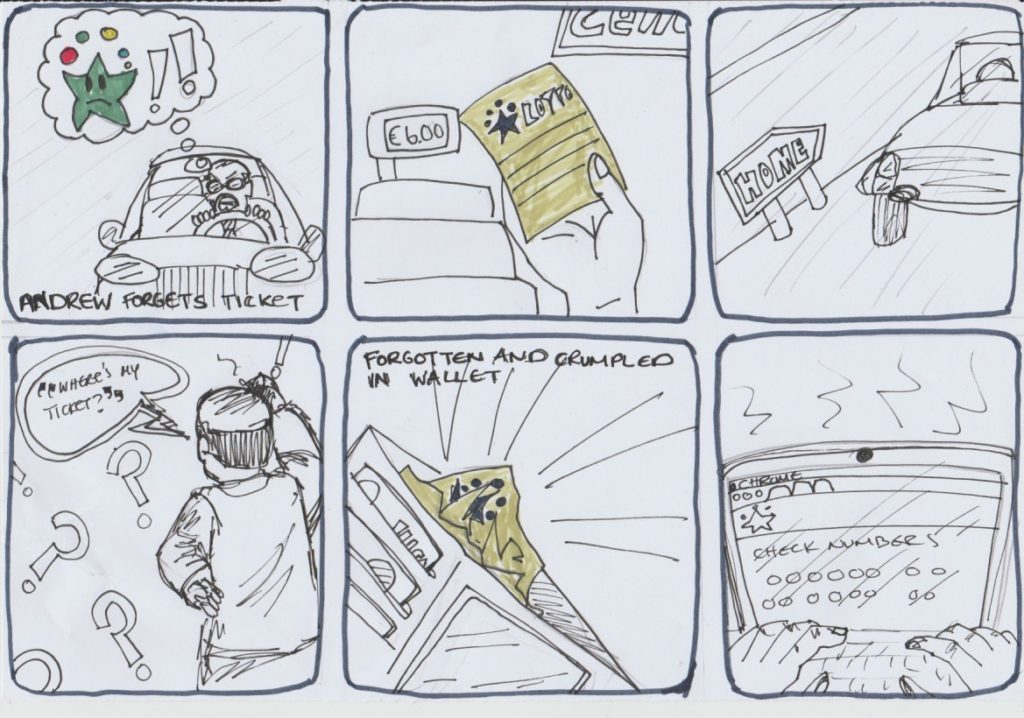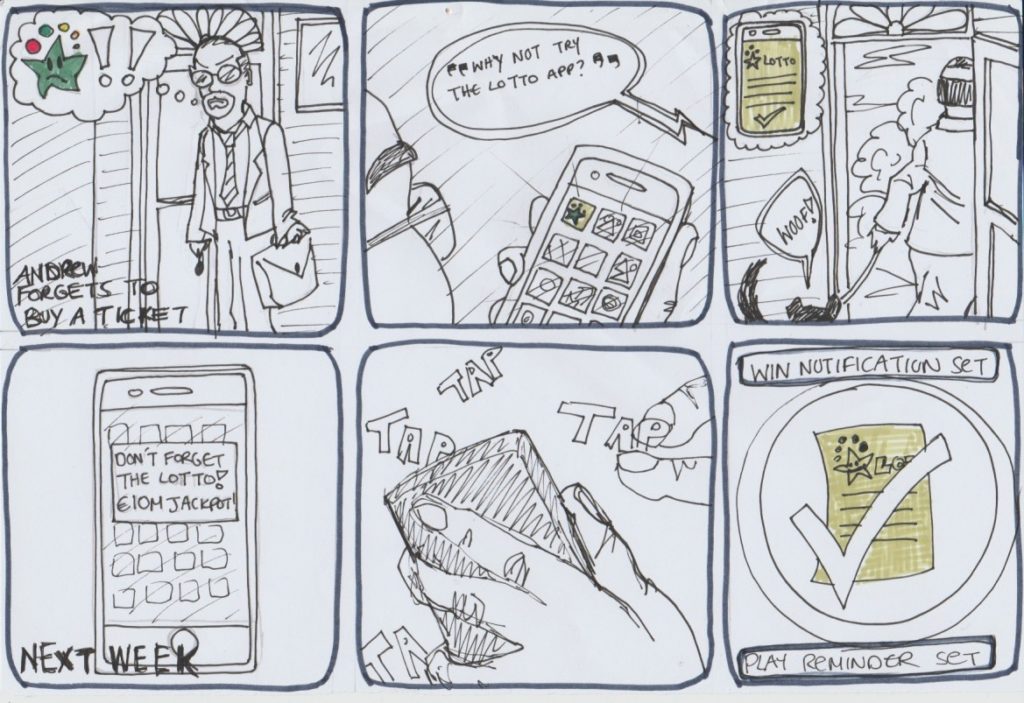Personas are fictional characters that carry the needs, goals and behavioural patterns of our real and potential users[1]. Personas are created to guide the user experience team into creating a better or new solution.
Developing our personas at the beginning of the project will inform us of expected app functionalities, help uncover gaps, or will highlight new opportunities[2]. The key is to prioritize the needs of the most important users without compromising our abilities to meet the needs of less important users[3].
In order to get main characteristics of our persona, we went back to the data gathered from the interviews and created a Persona Mapping:
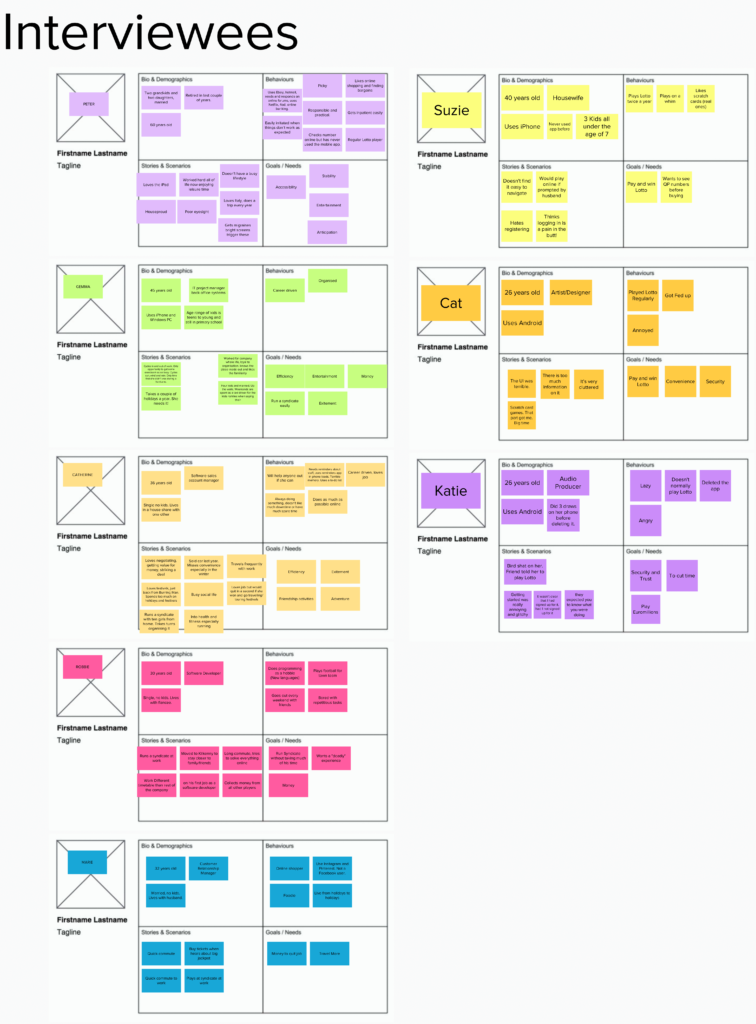
The mapping can be seen with more details in Mural.co.
During this exercise each of us will develop one persona based on the potential audiences of the Lotto app, we brainstormed over each one of them to organize elements into persona groups that represented our main users and we refined the personas and separated them into categories. We found that in each persona there were behavioural patterns that overlapped.
According to usability.org [4], there are some questions to ask during a persona development that will help us construct a snapshot of our users and we used these to develop a persona, each of the questions is designed to reach different objectives:
- To define the purpose and Vision of the Lotto App.
- To get a description of the user.
- To find out user motivations.
To answer each of the questions we went back to the data of our user research, which showed us personal, professional and technical elements of our most important users and also illustrated their needs.
Define the Purpose/Vision for the Lotto App
The purpose of the Lotto App is to allow people to play its existing range of draw games. The purpose is also to allow users to check the numbers of previous games. These are the main purposes of the Irish National Lottery app. The main goal of the Irish National Lottery app is to make it easier for people to play Euromillions or Lotto games without the need of going to a shop to buy tickets.
Objective: Describe the User
Personal
Based on the user research, the majority of the users that play the Lotto using the app (22.5%) are within the age brackets of 25-34 and 35-44, a slight majority are male and have received a higher education. It’s worth noting that data is probably skewed as our user pool was limited to our social networks.
Professional
On the professional side, we made a few assumptions. For this persona he has 6 years experience in recruitment and he works as a Recruiting Associate for a US technology company.
He wants to buy tickets every time there’s a big jackpot as he feels smaller prizes won’t make a big change to his life. The user uses the Lotto app because it’s more practical than going to the shop.
He hears about the big jackpots from co-workers during the coffee/lunch breaks. From time to time he receives a notification or an email from the Irish National Lottery about large jackpots.
He leaves work at 17:30, by the time he arrives at home he tends to forget about to buy the ticket, for that reason he buys tickets during work or during his breaks. He usually buys the tickets on the day of the draw.
Technical
The user is comfortable with smartphones and personal computers. He considers himself an advanced user, for his job position, he uses LinkedIn and Jobs.ie to recruit new employees, he also uses the Google Calendar to set interviews. For his personal use he uses Facebook and Instagram with frequency (a few times a day), and also Whatsapp to be in touch with his family and friends. He spends 8 hours a day on the internet.
Objective: User Motivation
The user main motivation is to get rich, every time he plays he dreams about things he will do when he wins the jackpot (buy a new car, move to a sunnier place). Even knowing that odds are not on his side, the user is chasing a thrilling experience and he needs the Lotto app to bring that experience for him in a quick way that fits his lifestyle.
Defining Behavioral Variables
In order to create the user personas, we gathered the behavioral patterns that emerged from focusing in the following types of variables [3]: activities, attitudes, aptitudes, motivations and skills. The initial result of this exercise can be seen in the gallery below:
And below is the digital version that can also be seen in full on Mural.co.

[1] How to create personas. (2017, November 17). Retrieved December 10, 2017, from https://knowledge.hubspot.com/contacts-user-guide-v2/how-to-create-personas
[2] Brown, D. (2016, November 11). How to Build a Problem Statement. Retrieved from https://medium.com/eightshapes-llc/how-to-build-a-problem-statement-d1f21713720b
[3] Cooper, A. (2014). About face: the essentials of interaction design. Hoboken, NJ: John Wiley & Sons.
[4] Personas. (n.d.). Retrieved from https://www.usability.gov/how-to-and-tools/methods/personas.html




